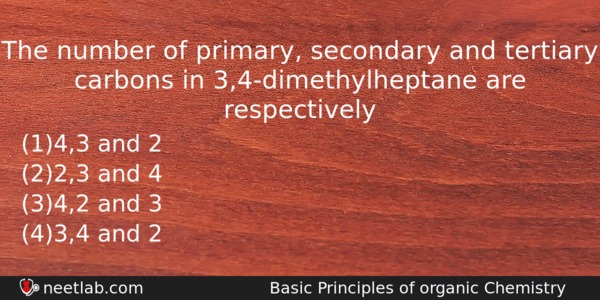| ⇦ | 
| ⇨ |
The number of primary, secondary and tertiary carbons in 3,4-dimethylheptane are respectively
Options
(a) 4,3 and 2
(b) 2,3 and 4
(c) 4,2 and 3
(d) 3,4 and 2
Correct Answer:
4,3 and 2
Explanation:
No explanation available. Be the first to write the explanation for this question by commenting below.
Related Questions: - Which one of the following species does not exist under normal conditions?
- Mohr’s salt is
- The silver salt of a fatty acid on refluxing with an alkyl halide gives an
- The number of nodal planes in pₓ is
- Which of the following halides is the most stable
Topics: Basic Principles of Organic Chemistry
(124)
Subject: Chemistry
(2512)
Important MCQs Based on Medical Entrance Examinations To Improve Your NEET Score
- Which one of the following species does not exist under normal conditions?
- Mohr’s salt is
- The silver salt of a fatty acid on refluxing with an alkyl halide gives an
- The number of nodal planes in pₓ is
- Which of the following halides is the most stable
Topics: Basic Principles of Organic Chemistry (124)
Subject: Chemistry (2512)
Important MCQs Based on Medical Entrance Examinations To Improve Your NEET Score
18000+ students are using NEETLab to improve their score. What about you?
Solve Previous Year MCQs, Mock Tests, Topicwise Practice Tests, Identify Weak Topics, Formula Flash cards and much more is available in NEETLab Android App to improve your NEET score.
Share this page with your friends

Leave a Reply